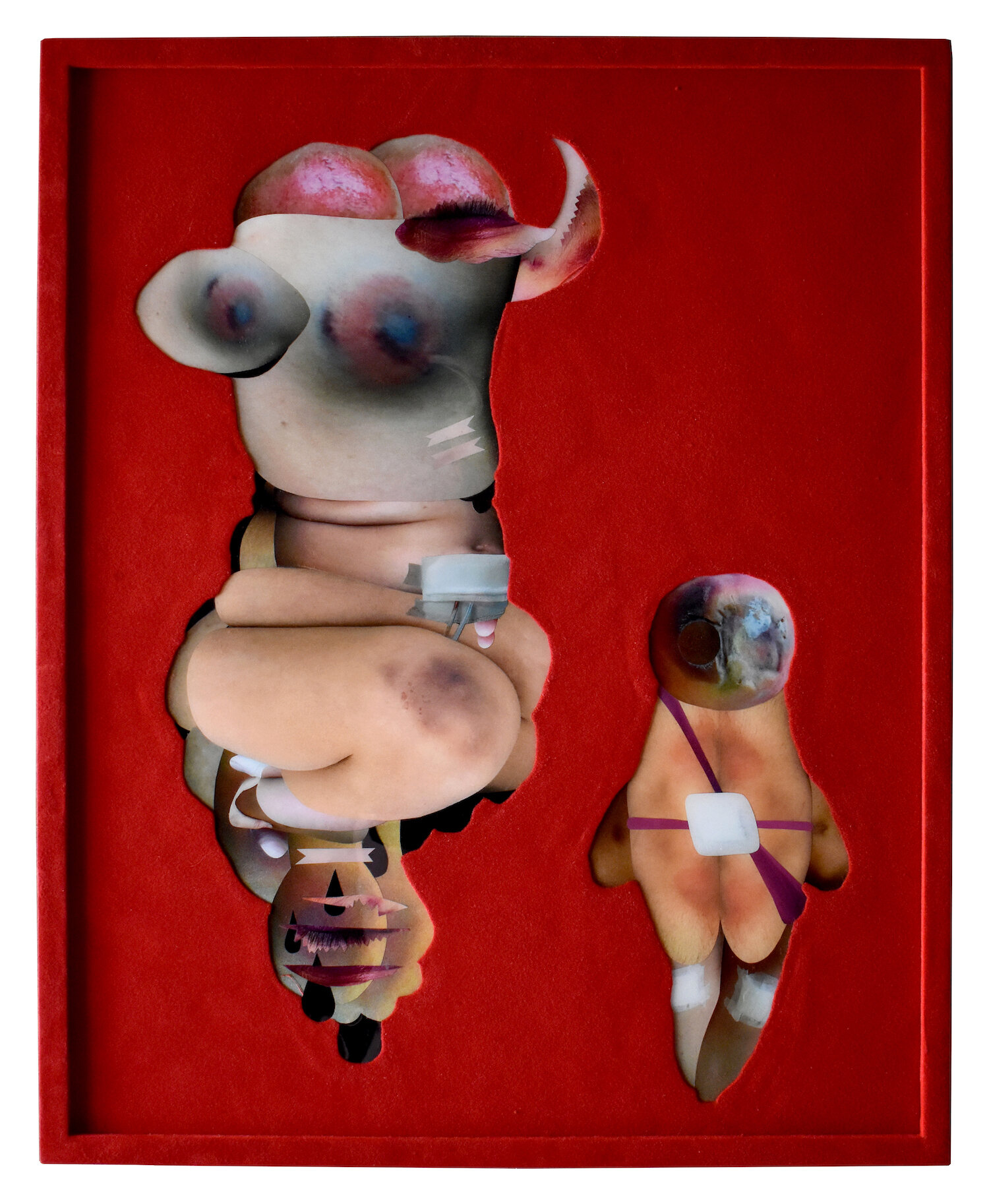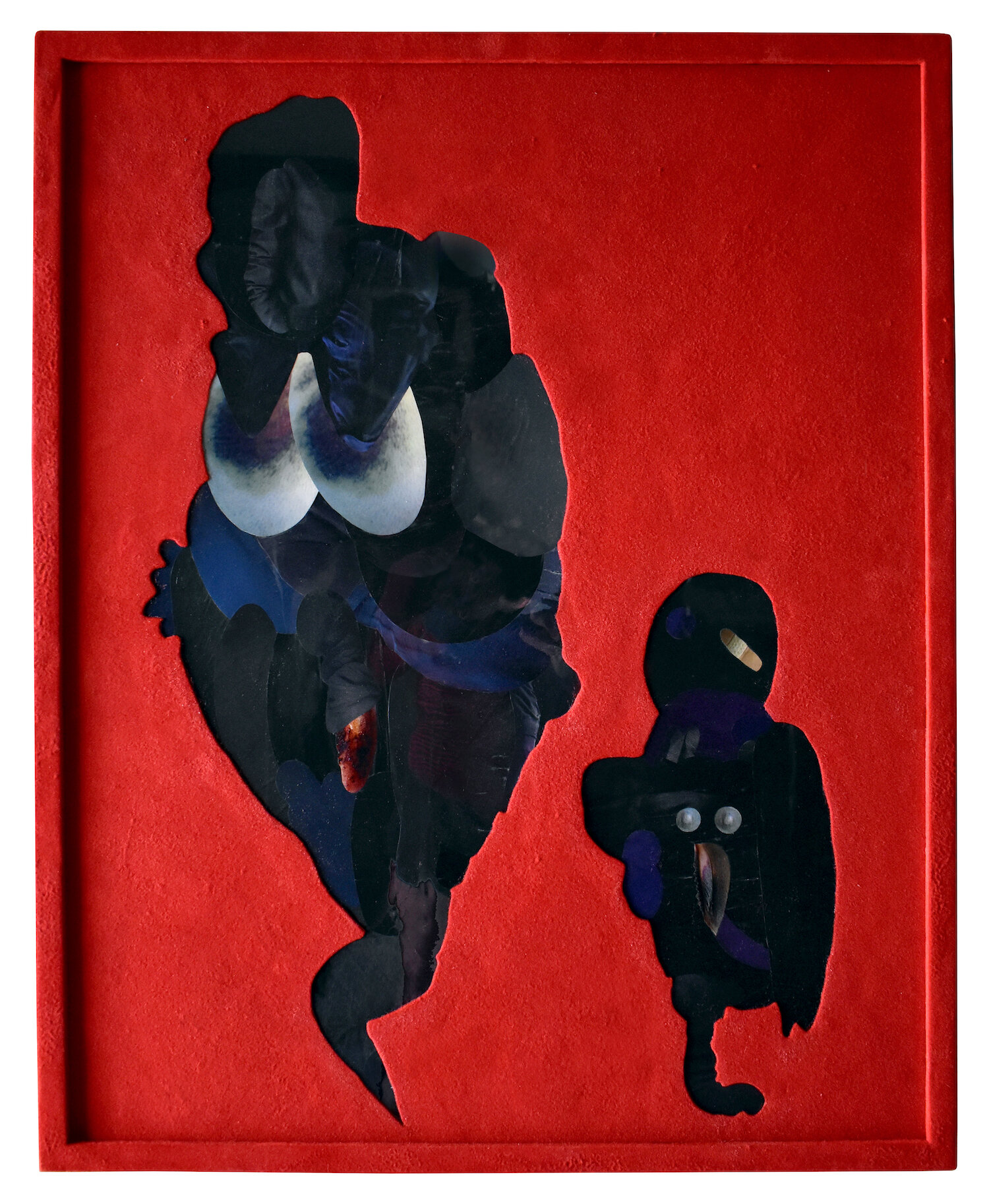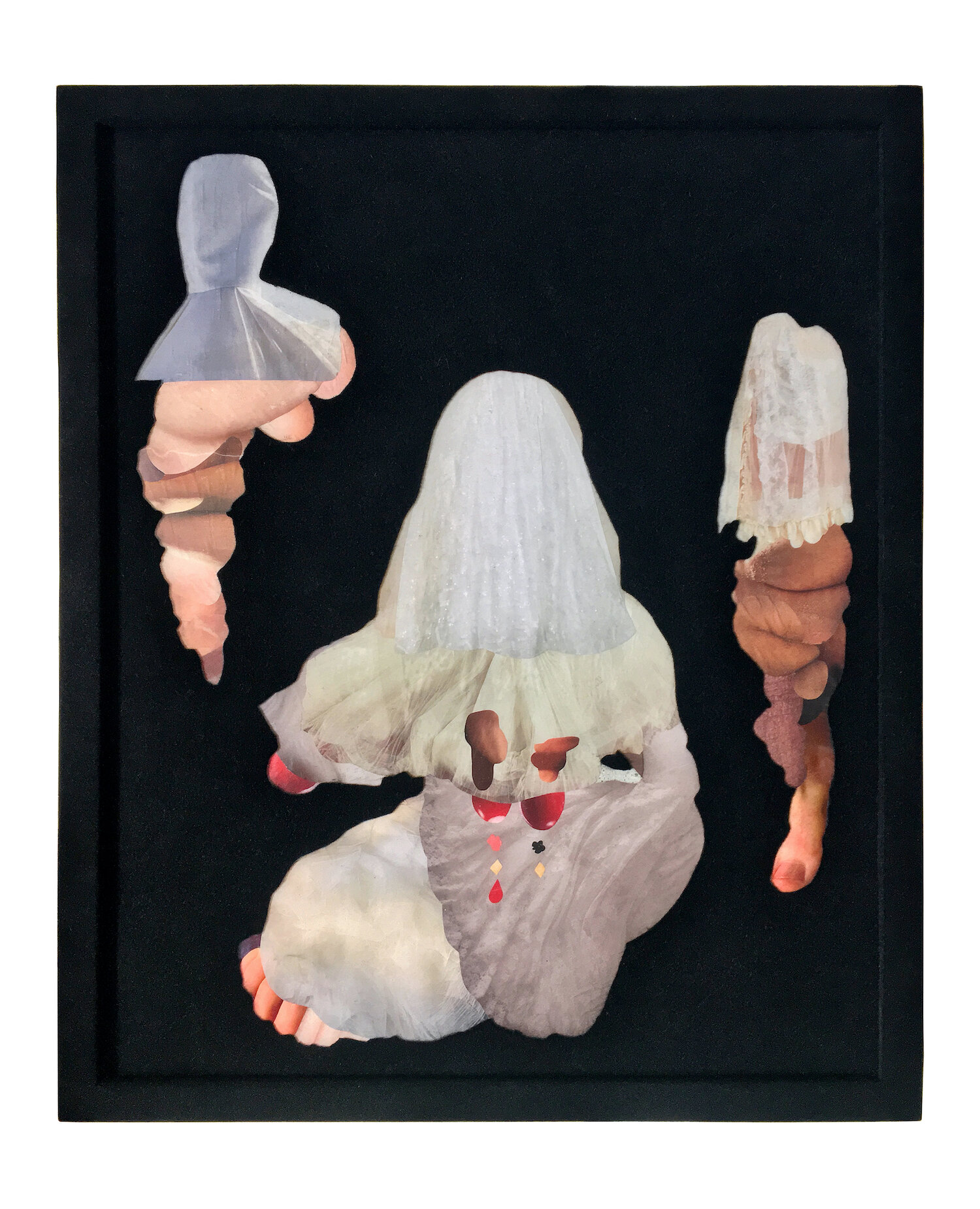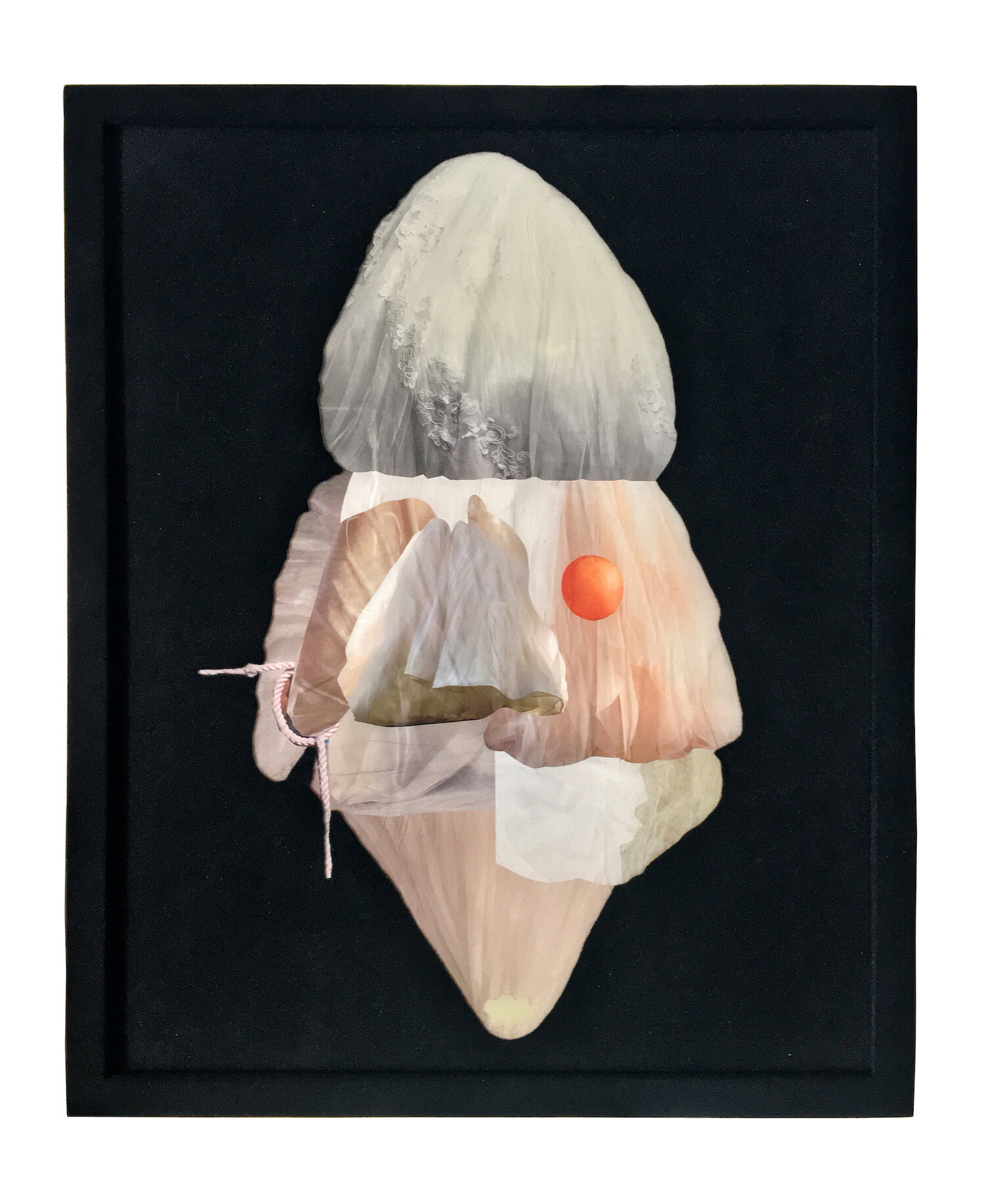Sienna Freeman’s studio space.
Sienna Freeman
Sienna Freeman (she/her) is a San Francisco–based visual artist and writer, hailing from Philadelphia via upstate New York. Her visual work has exhibited across the United States and internationally in Switzerland, London, Belgium, and Canada. Her writing has been published by ArtPractical.com, DailyServing.com, QCCA (Queer Conversations on Culture and the Arts) and KADIST SF. She published a 68-page visual novel titled “Red Gold” with FUZZ press in 2019. Freeman earned an MA in Visual & Critical Studies and an MFA in Fine Art from the California College of the Arts in San Francisco, and a BFA in Photography from the University of the Arts in Philadelphia. More here: www.siennafreeman.com and on Instagram @sienna_freeman.
Interview with Sienna Freeman
Questions by Andreana Donahue
Can you tell us a bit about your background and where you grew up? In what ways have your early visual experiences and personal history led to art-making?
I’m originally from New York state, but moved to Philadelphia at seventeen and stayed there for 14 years. My parents are hippy-weirdo-artist types, so I grew up in an environment that encouraged and prioritized art-making. My mom started out as a weaver and now teaches art, paints, works with ceramics, a bit of everything really. My stepdad was a social worker who defended folks who were wrongfully laid-off, evicted, etc. My birth-dad played in punk bands for most of my youth and still makes music, he does textile design and construction to pay the bills.
I was raised in my stepdad’s family home, with my folks, my step-grandmother, and two step uncles, one of which was a Vietnam vet in a wheelchair. My stepdad and his family are black, my mom and I are white. Conversations around race and civil justice were normal and frequent in my household growing up. I am grateful that the people who raised me encouraged asking questions and having a critical eye. This type of environment taught me to appreciate beauty while sitting with the experience of discomfort, a feeling that early on likely inspired me to make the type of work that I do.
Where are you currently based and what initially attracted you to working in this community? Are there any aspects of this place that have surfaced in your work?
I moved to the SF Bay area in 2013 to do a double master’s degree at the California College of the Arts (an MFA and an MA in Visual and Critical Studies). I started out in live-work art space in Oakland, then spent a few years living on Treasure Island, and have been in SF for the past 4 years or so.
San Francisco is a stunningly beautiful place, in terms of the natural landscape and that neighborhoods like the Castro feel a bit like Utopia. There is an amazing community of queer and nonconformist folks making dynamic visual, written, and performance-based work, in both the digital and analog realms. This community keeps me inspired and engaged. But SF is also pretty ugly in terms of the divide between the rich and the poor, amplified by the city’s devastating homelessness problem. The high cost of everything makes it a real challenge for artists to thrive here. I am hopeful that the recent drop in rent caused by the pandemic will allow for a resurgence.
Sienna Freeman in her studio.
Can you tell us about your studio and what a typical day is like for you? Do you share space or ideas with other artists while working, or is it a more solitary routine?
For the last few years I’ve worked out of a home studio, but I now rent a space in a communal art warehouse in the Mission neighborhood of SF. I split my current studio with a sculptor friend, Jessica Hubbard. This keeps it cheap and fun, though we are hardly there at the same time. I have a 9 to 5, so tend to do quicker “process” type sessions during evenings over the week, and then longer “exploratory” studio days over the weekend.
What criteria do you follow for selecting materials? Do you prefer to maintain a narrow focus or work across diverse media? How do you navigate the limitations and possibilities that result from this path?
The collages I make utilize my own photographs and found images, as well as sculptural objects that are both found and fabricated. Photographs of my own body or the bodies of those close to me often serve as source material, along-side photographs I’ve shot of liquids in motion (i.e. blood in a horror movie), as well as objects that bind or constrain (i.e. clothing, rope, ribbon). The found images are culled from printed matter including wedding magazines, porn, and genre publications like “Horse & Rider.” Often, it is difficult to discern which is which in the final piece.
For the more sculptural work, I’ve recently been body casting in plaster and plastic. I’ve also made some soft sculptures in the past few years. These were hand and machine sewn from clothing, bedsheets, rope, and horsehair. The materials I use in the 2D and 3D works are in dialog here, at some points they even stand in for or represent different aspects of each other.
Can you walk us through your overall process? How would you describe your approach to manipulating materials? What about decision-making and editing?
Aspects of my process can be looked at much like a combination of stream of consciousness and constrained writing techniques. I find, produce, and manipulate source materials as I go, working within a fixed set of thematic, conceptual, or visual constraints. I embrace the element of chance in finding and placing pieces, as I enjoy exploring the tension between control and chaos. These methods allow for an automatic processing of visual and visceral information on a semiotic level, an intuitive sense of sight that is both linked to and detached from our contemporary mass media experience.
Three Cups, Three Fishes, 2020. Hand cut and assembled found images and photos, plastic resin, pigment, flocking, 20 x 16 in.
Can you talk about some of the ongoing interests, imagery, and concepts that have informed your process and body of work over time? How do you anticipate your work progressing in the future?
The past year or so I’ve been making sort of faux velvet paintings. They are collages that are cast in plastic resin and then the surfaces of the negative space and frames are flocked with textile fiber, so they are fuzzy. There is a serious kitsch value here and a “lowness” in material choice that I am fully embracing. I want them to be campy but also a bit sad and serious and challenging to recognize. They are somewhat sloppy but also very precise. I want them to call out our messy human physicality and the emotions that go along with that, and hopefully produce an uncanny exchange. The images typically have something to do with the body and corporeal positionality, process, or transition. Most of them have something to do with procreation, perhaps with an alchemical narrative bent. I nod to historic Surrealist painters like Kay Sage and Leonora Carrington when I say “alchemical” here.
Experimenting with flocking recently led me to explore the very crafty and very nerdy world of model train scenery. I’ve been playing around with fake grass and mold making, the latter of which has been a part of my studio practice for years. I’m just starting some horizontal landscape sculpture/collages that in my mind right now look like very sensual golf courses. Lots of hills and valleys, hips and elbows emerging from flat terrain, with small mile-marker moments of collage disruption in between. I think these have something to do with the pandemic, something about rolling greenery as solace and sanctuary during Covid-19 times, but I haven’t fully worked that part out yet.
Do you pursue any collaborations, projects, or careers in addition to your studio practice? If so, are there connections between the two?
In addition to maintaining a studio practice, I also write about art critically, and sometimes write creatively. For critical art writing, I tend to focus on other artists that I feel a kinship with or have a lot of questions about. The creative writing is super personal and often accompanies my visual work, I typically do not share it publicly.
In terms of how I earn my bread and butter, I work as a Project Manager in Operations at the San Francisco Museum of Modern Art. Before SFMOMA, I worked in the commercial gallery world for many years where I used to sell art and curate shows. I see my studio practice, my writing practices, and my 9 to 5 as very much linked and mutually informative. The combination allows me to concurrently participate in and provide support for building a greater arts culture and community.
Baby Maker 3, 2019. Hand cut and assembled found images and photos, plastic resin, pigment, flocking, 16 x 20 in.
As a result of the pandemic, many artists have experienced limited access to their studios or loss of exhibitions, income, or other opportunities. Has your way of working (or not working) shifted significantly during this time? Are there unexpected insights or particular challenges you’ve experienced?
I’ve been really lucky. When the pandemic started, I was living with roommates, but had a studio in the house, so access to a place to make work was not affected. I was also lucky to survive two rounds of layoffs/furloughs at SFMOMA and have been working from home since March. In July I moved into a new place with my partner that is smaller, so no home studio, but was lucky again to find a cheap studio space to rent nearby that’s in walking distance.
I did have a show scheduled to open in late-March, which was postponed indefinitely, as the space will likely not open back up again. I also lost my grandfather and my aunt to Covid-19, both lived on the east coast. Processing this loss afar has felt somewhat unreal, it’s been hard not being able to grieve and gain closure with family.
In a time that seems to be marked by uncertainty, collective anxiety, and increasing social unrest, why do you think the perspectives and contributions of artists remain meaningful? Do you feel a natural relationship exists between your work (or the role artists play more broadly) and confronting established systems - of power, cultural institutions, or otherwise?
The effects of the pandemic have been devastating, but I also think right now is a long overdue moment of change that I am excited to be living through and participating in. This feels like a moment where the bubble has popped, and I am hopeful that the last 400+ years of systematic racism and oppression in America may finally be addressed and dismantled. I find myself horrified by our current government on a daily basis, but grateful, encouraged, and motivated by the powerful counter-movements that have gained momentum.
As for the role of artists, I think all art is political whether the person(s) that made it want it to be or not. I think it’s the job of artists to make the work that feels true to them and to participate in a greater dialog that encourages new ways of understanding the world around us or ourselves. Art is a reflection of the time and culture in which it was produced and when folks say their work is not political, my bet is that they are either willingly or unconsciously ok with benefitting from established systems of oppression and white power. Now also seems to be a pivotal and poignant moment where Museums and Cultural Institutions are finally being held accountable for perpetuating such systems of power, wittingly or unwittingly. As a museum employee, I am feeling hopeful and resolved to push for positive change from the inside.
Can you share some of your recent influences? Are there specific works - from visual art, literature, film, or music - that are important to you?
From a pop culture perspective: for the past year or so I’ve been pretty obsessed with the Boulet Brothers' Dragula, a reality drag horror competition show that is just wonderfully disgusting and fantastic. I’ve also been thinking a lot about the 1970’s Hammer Film aesthetic: lots of fake blood, velour, candlelight, fog, and cleavage. Lesbian classics like The Vampire Lovers, (1970) and Twins of Evil, (1971) are favorites.
In terms of literature: I pretty consistently revisit theoretical works by Julia Kristeva and George Bataille. Themes around the body and the experience of physical/psychic otherness are of interest there. I’m also interested in craft theory, where concepts around materiality and the historic, cultural, and physiological use value of objects are explored.
Who are some contemporary artists you’re excited about? What are the best exhibitions you’ve seen in recent memory?
Recently, I’ve been thinking a lot about the work of Sarah Lucas and Kevin Beasley. I also am frequently excited by the work of LaKela Brown, Doreen Garner, Rose Nestler, and Young Joon Kwak. I also think a lot about historic Surrealism, specifically the art and writing of Dorothea Tanning.
The best exhibition I’ve seen in recent memory is Jeamin Cha’s solo exhibition Troubleshooting Mind I, II, III at KADIST SF. This is the first show that I visited after galleries were allowed to open back up this September in San Francisco, so it was a memorable and somewhat nerve-wracking experience. The show explored the relationship between depression, anxiety, and late capitalism through blind drawing, sculptural installation, and video. Somewhat ironically, the work was made before the pandemic even began.
What are you working on in the studio right now? What’s coming up next for you?
I am gearing up for a December 2020/January 2021 artist residency at Judit Navratil’s Art Camp, a “virtual reality Social Housing Neighborhood intended to serve the art community during the transitional and groundless period of physical distancing.” I’m also writing a feature length article for Issue 3 of Feral Fabric, a scholarly journal highlighting radical textile production in art, activism, and countercultural movements. I’m also working on a new series of sculptural objects that are inspired by the body, landscape, model train sets, and synthetic woodland scenery. They should be weird.






